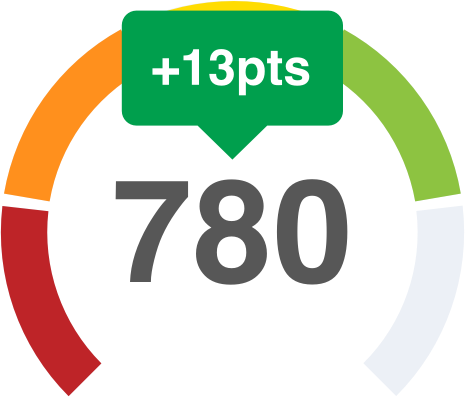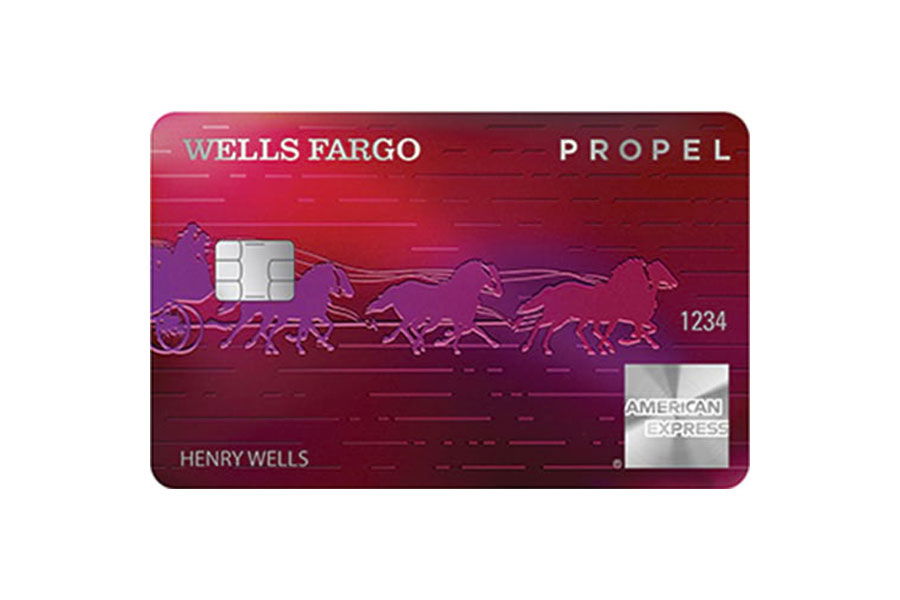Your credit score isn’t just a number—it’s a key factor in your financial future. Lenders, landlords, and even some employers use it to determine whether you qualify for loans, credit cards, housing, and more. A high score can unlock lower interest rates, better borrowing terms, and greater financial flexibility.

FICO scores are the most widely used credit scores, ranging from 300 to 850. The higher your score, the more likely you are to get approved for credit with favorable terms. If your score is on the lower end, you may face higher interest rates, deposits, or even denials.
Here’s how your FICO score range affects your financial opportunities and what you can do to improve it.
FICO Score Ranges and What They Mean
Lenders use your FICO score to decide whether to approve you for credit and what interest rate to offer. The higher your score, the better your financial options. Here’s how different FICO score ranges impact borrowing, interest rates, and overall financial opportunities.
Excellent (800-850)
A FICO score in this range puts you in the best possible position. You’ll qualify for the lowest interest rates, the highest credit limits, and the most favorable loan terms. Whether you’re applying for a mortgage, auto loan, or credit card, lenders will see you as a low-risk borrower. The highest credit score you can have is 850.
See also: How to Get into the 800+ Credit Score Club
Very Good (740-799)
Borrowers in this range still receive competitive rates and approvals for most loans and credit cards. Some lenders set 750 or 760 as the cutoff for their best offers, but overall, this range keeps borrowing costs low and provides access to strong credit card rewards and loan terms.
Good (670-739)
Most people fall into this category, and while approval chances are high, interest rates may not be the best. A 700+ score is often enough to secure a decent mortgage or auto loan rate, but improving it further can lead to better terms.
Fair (580-669)
This range makes borrowing more expensive. Lenders see higher risk in this category, so approvals are harder to come by, and interest rates are significantly higher. Some loans, like FHA mortgages, may still be available, but expect extra fees or larger down payments.
Poor (300-579)
Getting approved for loans or credit cards is difficult with a score in this range. If you do qualify, the interest rates will be among the highest, and you may need to provide a security deposit for credit cards or utilities. Improving your score by just 50 points could mean saving thousands of dollars over the life of a loan.
How Your FICO Score Is Calculated
Your FICO score is based on five key factors, each carrying a different level of importance. Improving your score means focusing on the areas that have the biggest impact.
Payment History (35%)
Paying your bills on time is the most important factor in your credit score. Even one missed payment can cause a noticeable drop, so setting up automatic payments or reminders can help keep your score on track.
Credit Utilization (30%)
This measures how much of your available credit you’re using. Keeping your balances below 30% of your total credit limit is essential, but staying under 10% is even better for maximizing your credit score. Paying off balances regularly can help keep this number low.
Length of Credit History (15%)
The longer your accounts have been open, the better it is for your credit score. This is why it’s usually best to keep older credit accounts open, even if you don’t use them often. Closing accounts can shorten your credit history and impact your score.
Credit Mix (10%)
Lenders like to see that you can manage different types of credit responsibly. A mix of credit cards, installment loans, mortgages, or other credit accounts can improve your credit score. However, opening new accounts just to diversify your credit mix isn’t necessary.
New Credit Applications (10%)
Every time you apply for new credit, a hard inquiry is made on your credit report. Too many inquiries in a short period can lower your score. Space out applications when possible to avoid unnecessary drops.
Pro tip: Want a quick boost? Pay down high balances and set up automatic payments to avoid missed due dates.
Why Your Credit Score Matters
Your credit score doesn’t just affect loan approvals—it plays a role in many areas of your financial life. A strong score can save you money and open up opportunities, while a low score can make everyday expenses more expensive.
Loan and Credit Card Approvals
Lenders use your credit score to decide whether to approve you for a credit card, car loan, mortgage, or personal loan. A higher score increases your chances of approval and gives you access to better terms. If your score is low, you may face denials or be required to pay higher fees or deposits.
Interest Rates
Your credit score directly impacts the interest rates you’re offered. Borrowers with higher scores qualify for lower rates, while those with lower scores pay more.
For example, consider a $250,000 mortgage on a 30-year loan:
- A borrower with a 760+ score might get a 6.0% interest rate, paying $1,500 per month in principal and interest.
- A borrower with a 620 score might get a 7.5% interest rate, paying $1,750 per month—that’s an extra $90,000 in interest over the life of the loan.
A higher credit score can mean thousands of dollars in savings over time.
Insurance Premiums
Many insurance companies use credit-based scores to determine rates for auto, home, and even life insurance. A lower score can lead to higher premiums because insurers view it as a sign of increased risk.
Renting an Apartment
Landlords often check credit scores when reviewing rental applications. A higher score makes it easier to get approved without needing a larger security deposit. If your score is low, you may need a co-signer or have fewer rental options.
Your credit score influences more than just borrowing—it affects everyday expenses and financial opportunities. Keeping your score high can help you save money and avoid unnecessary hurdles.
Ready to Clean Up Your Credit Report?
Learn how credit repair professionals can assist you in disputing inaccuracies on your credit report.

FICO vs. VantageScore: What’s the difference?
FICO and VantageScore are the two main credit scoring models, but lenders overwhelmingly prefer FICO. In fact, 90% of lending decisions rely on FICO scores, while VantageScore is used in some cases, particularly for free credit score reports or alternative lending.
Key Differences
- FICO takes a snapshot of your credit at a given moment, weighing long-term factors like the age of your oldest account more heavily. VantageScore looks at trended data, meaning it considers how you’ve managed credit over time, including recent spending habits and whether you’re improving or worsening your debt situation.
- If you have a thin credit file, VantageScore may generate a score faster than FICO. While FICO typically requires at least six months of credit history, VantageScore can create a score with just one month of reported credit activity.
- FICO scores range from 300 to 850. VantageScore 2.0 ranged from 501 to 990, but the newer VantageScore 3.0 and 4.0 match FICO’s 300 to 850 scale to reduce confusion.
Example: Why This Matters
A borrower with a long-established credit account might have a higher FICO score, while someone with a short credit history but strong recent financial habits might have a higher VantageScore. Since most lenders rely on FICO, it’s the score that typically determines your ability to qualify for loans and get the best interest rates.
Industry-Specific FICO Scores
Not all FICO scores are the same. While the standard FICO score ranges from 300 to 850, some industries use specialized scoring models that better reflect a borrower’s risk for specific types of credit. These industry-specific FICO scores range from 250 to 900 and place more emphasis on factors relevant to the type of loan being considered.
- Auto lenders focus more on past car loan payments, looking closely at missed or late payments on previous auto loans or leases. A strong history of on-time car payments can improve approval odds and interest rates.
- Mortgage lenders place more weight on late payments, foreclosures, and other mortgage-related credit events. Even a single late mortgage payment can have a significant impact on a borrower’s ability to qualify.
- Credit card issuers evaluate credit utilization more heavily, meaning they focus on how much of your available credit you’re using. A lower utilization rate increases the chances of approval and better terms.
Since these industry-specific scores follow a different scale, a good score on a standard FICO model may not translate exactly the same way when applying for a car loan, mortgage, or credit card. However, maintaining good credit habits across all accounts generally leads to stronger scores in any model lenders use.
How to Improve Your Credit Score (Step-by-Step Guide)
Improving your credit score takes time, but small changes can make a big difference. Follow these steps to boost your score and improve your financial opportunities.
Step 1: Check your credit report for errors
Review your credit reports from all three major credit bureaus at AnnualCreditReport.com. Look for mistakes such as incorrect balances, duplicate accounts, or fraudulent activity. If you find an error, dispute it with the credit bureau to have it corrected.
Step 2: Pay every bill on time
Payment history is the biggest factor in your credit score. Set up automatic payments or reminders to avoid missing due dates. Even one late payment can cause a drop in your score.
Step 3: Lower your credit utilization
Your credit utilization ratio—how much of your available credit you’re using—affects your credit score. Keep balances below 30% of your credit limit, and ideally under 10% for the best impact. If possible, request a credit limit increase or pay down existing balances to improve this ratio.
Step 4: Avoid closing old accounts
Length of credit history matters, so keep older credit accounts open unless they have high fees. Closing accounts reduces your total available credit, which can raise your credit utilization and lower your score.
Step 5: Limit new applications
Each hard inquiry from a credit application can lower your score slightly. Space out applications by at least six months to avoid unnecessary drops.
Step 6: Become an authorized user
If a family member or trusted friend has a well-managed credit card, ask to be added as an authorized user. Their positive payment history can help boost your credit score without requiring you to open a new account.
Step 7: Work with a reputable credit repair company if needed
If you have multiple negative items on your credit report, a credit repair company may be able to help you dispute inaccuracies and improve your score. Make sure to choose a reputable service that provides clear explanations of their process and fees.
Bottom Line
Your FICO score influences much more than loan approvals—it can affect interest rates, rental applications, and even job prospects. Knowing where your score stands in the FICO range can guide smarter financial decisions and help you make progress toward better credit.
If your credit score needs improvement, start by focusing on what moves the needle: pay bills on time, keep balances low, and limit new credit applications. Simple steps like correcting credit report errors or becoming an authorized user on a responsible account can also help.
A higher credit score can unlock better rates, lower costs, and less financial stress. The earlier you take action, the more choices you’ll have when it comes to borrowing and beyond.
Frequently Asked Questions
What is a good FICO credit score?
According to the FICO credit score ranges, a good credit score is in the range of 670 to 739.
What is an excellent credit score?
An excellent credit score, according to the FICO credit scoring model, is 800 and above. Those with excellent credit generally have a pristine and long-established payment history, with multiple types of credit and a low credit utilization ratio.
What is the average credit score?
The average credit score in the US is 718, according to data from MyFICO. This is based on credit scores using the FICO model.
How many people have a perfect credit score?
According to Experian, a mere 1.3% of FICO credit scores are a perfect 850.
What is a good credit score to buy a car?
If you’re looking to buy a car with a car loan, a good credit score is around 700. This means that if your score is just below that, you might face more questions about your credit history.
Remember that the exact definition of ‘good’ credit will also vary from between lenders.
Why is my credit score low?
Your credit score could be low for numerous reasons. In addition to late payments, outstanding debt or a poor credit utilization ratio, having little to no credit history can also result in a low score.
There may also be mistaken items on your credit report that are dragging your score down.
Your credit history can also become thin if your credit report shows no activity for a long stretch of time, as items can ‘fall off’ your report.
How can you start building credit history?
Building credit history from scratch might seem intimidating, but it doesn’t have to be stressful.
- Start slow. It’s important to remember that it takes time to build good credit. Don’t overdo it by applying for numerous credit cards and taking out a loan all at once.
- Find a secured or student credit card. An effective way to build credit from scratch is to find a secured credit card. These cards require a deposit that functions as your credit limit.
- Maintain a low balance. Use your first credit card lightly and always ensure that you can pay off what you spend within the required period.
- Pay on time. Making on-time payments is the most important factor in building good credit.




